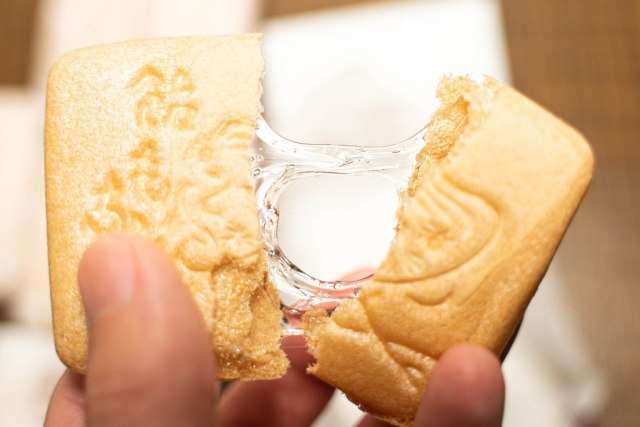
This traditional confection is pretty to look at, but how’s the taste?
Our Japanese-language reporter Tasuku Egawa recently discovered a shop in Tokyo’s Shibuya district called Omotesando Niigatakan N’espace, which specializes in local goods originating from Niigata Prefecture. This discovery was particularly exciting because he’d heard of a particular sweet from Niigata called amemonaka (飴もなか) but had never gotten a chance to try it before. Luckily, the store had plenty of the little cakes in stock.
First, it’s worth noting that the amemonaka is essentially an amalgamation of two popular types of traditional Japanese sweets. A monaka is a kind of wafer cake typically filled with red bean jam. This particular version, however, derives its name from its atypical filling of mizu-ame, a sweet starch syrup not unlike Yamanashi Prefecture’s famous water cake in appearance.
Amemonaka are produced at Chomeido Ameho, a traditional confectionery store in Niigata Prefecture. While the date of their original creation was lost to time, records indicate that they were definitely in existence by 1931.
A box of five retails for 705 yen (US$6.52) at Omotesando Niigatakan N’espace, and each individually wrapped cake is adorned with a cute illustration of a woman wearing a long, triangular snow hat and snowshoes. It conjured up an image of traditional daily life in Japan’s snowiest regions in Egawa’s mind.
He flipped the package over and noticed that the expiration date was just shy of two months later–not too bad for a traditional confection. The only ingredients listed were mizu-ame, glutinous rice, agar-agar (a vegetable gelatin), and sugar.
Egawa next gently unwrapped the package and noted the beautifully delicate design of the wafer. “Amemonaka” was written alongside what looked to be an old man’s mask, while “Chomeido” graced the opposite side. From its exterior, the amemonaka looked similar to an ordinary monaka cake.
Now for the fun part–breaking it open:
As the wafer broke open, threads of glistening mizu-ame fanned out. Egawa broke into a smile while musing how such a simple act made him feel like a kid again. He had fun pulling the two halves apart and pushing them back together again while watching the shiny mizu-ame shift in form.
The amemonaka’s taste was simple but respectable, reminiscent of a trove of classic Japanese sweets. Compared to a regular monaka filled with read bean jam, it boasted an altogether different texture in the center–making for an enjoyable and new gastronomic experience. Egawa could imagine the amemonaka as a perfect complement to a hot cup of tea.
All in all, he encourages anyone who has a sweet tooth for monaka or ame-mizu or who enjoys “playing” with their food to try it out! If you can’t get to Niigata, the sweet treats can be ordered through Chomeido’s official website, upscale Japanese department store Takashimaya, or through other boutiques carrying local specialties from Niigata.
Sources: Chomeido, Takashimaya
All images © SoraNews24
● Want to hear about SoraNews24’s latest articles as soon as they’re published? Follow us on Facebook and Twitter!
[ Read in Japanese ]

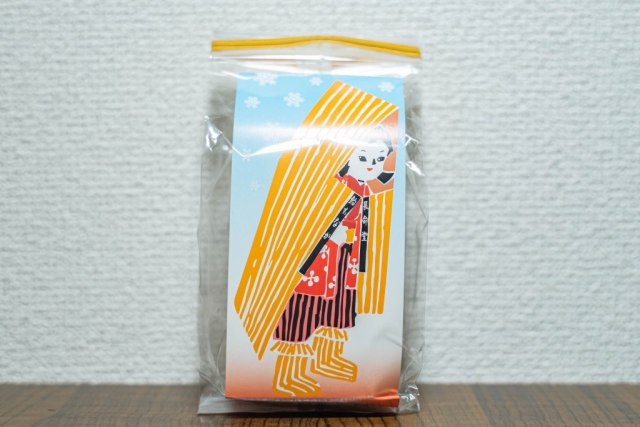
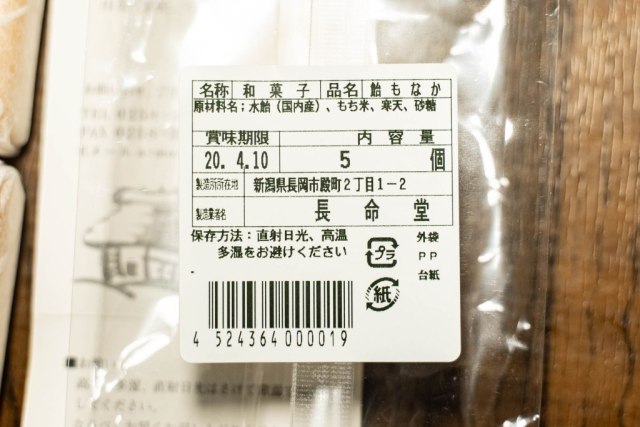
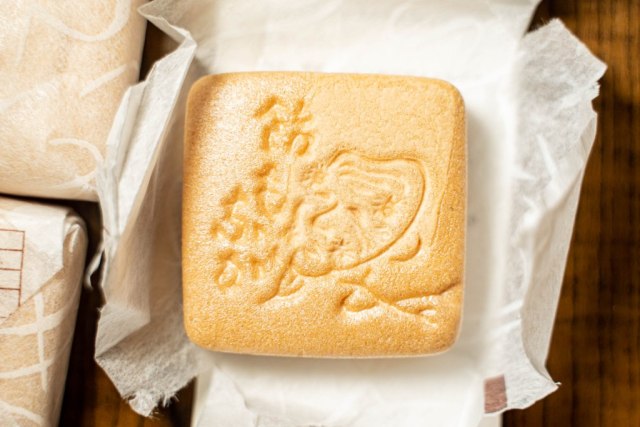
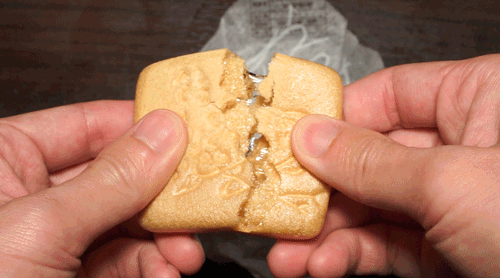
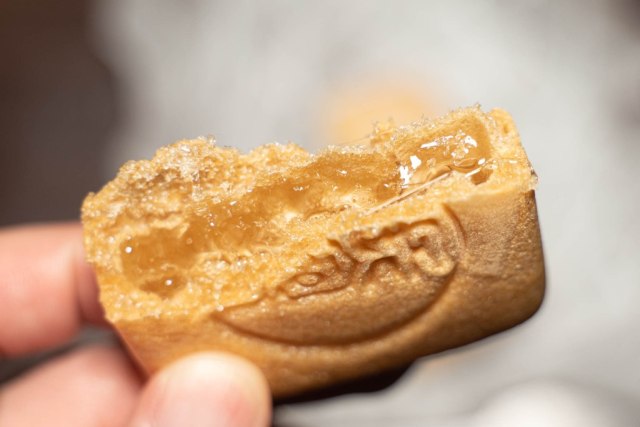
 Enjoy the sweet taste of autumn with the help of Kirby and pals
Enjoy the sweet taste of autumn with the help of Kirby and pals Japanese convenience store ice cream wins gold for reporter at the Tokyo Olympics
Japanese convenience store ice cream wins gold for reporter at the Tokyo Olympics Mister Donut’s strongest-ever matcha doughnuts are so intense they’ll bind with your DNA
Mister Donut’s strongest-ever matcha doughnuts are so intense they’ll bind with your DNA Drink Green! We check out the amazing “Green Tea Party” presented by Isetan and Ito En! 【Pics】
Drink Green! We check out the amazing “Green Tea Party” presented by Isetan and Ito En! 【Pics】 We get a taste of Starbucks Japan’s new coffees and sweets, including one that’s here to stay
We get a taste of Starbucks Japan’s new coffees and sweets, including one that’s here to stay McDonald’s new Happy Meals offer up cute and practical Sanrio lifestyle goods
McDonald’s new Happy Meals offer up cute and practical Sanrio lifestyle goods All-you-can-drink Starbucks and amazing views part of Tokyo’s new 170 meter-high sky lounge
All-you-can-drink Starbucks and amazing views part of Tokyo’s new 170 meter-high sky lounge More foreign tourists than ever before in history visited Japan last month
More foreign tourists than ever before in history visited Japan last month Beautiful Sailor Moon manhole cover coasters being given out for free by Tokyo tourist center
Beautiful Sailor Moon manhole cover coasters being given out for free by Tokyo tourist center Is the new Shinkansen Train Desk ticket worth it?
Is the new Shinkansen Train Desk ticket worth it? Arrest proves a common Japanese saying about apologies and police
Arrest proves a common Japanese saying about apologies and police Starbucks reopens at Shibuya Scramble Crossing with new look and design concept
Starbucks reopens at Shibuya Scramble Crossing with new look and design concept The oldest tunnel in Japan is believed to be haunted, and strange things happen when we go there
The oldest tunnel in Japan is believed to be haunted, and strange things happen when we go there Hey, Japanese taxi driver! Take us to your favorite restaurant in Tsuruga City!
Hey, Japanese taxi driver! Take us to your favorite restaurant in Tsuruga City! Hello Kitty isn’t a cat!? We called Sanrio to find out!
Hello Kitty isn’t a cat!? We called Sanrio to find out! Disney princesses get official manga makeovers for Manga Princess Cafe opening in Tokyo
Disney princesses get official manga makeovers for Manga Princess Cafe opening in Tokyo We try out “Chan Ramen”, an underground type of ramen popular in the ramen community
We try out “Chan Ramen”, an underground type of ramen popular in the ramen community Beautiful new Final Fantasy T-shirt collection on the way from Uniqlo【Photos】
Beautiful new Final Fantasy T-shirt collection on the way from Uniqlo【Photos】 Foreign English teachers in Japan pick their favorite Japanese-language phrases【Survey】
Foreign English teachers in Japan pick their favorite Japanese-language phrases【Survey】 There’s a park inside Japan where you can also see Japan inside the park
There’s a park inside Japan where you can also see Japan inside the park Japanese convenience store packs a whole bento into an onigiri rice ball
Japanese convenience store packs a whole bento into an onigiri rice ball Studio Ghibli releases Kiki’s Delivery Service chocolate cake pouches in Japan
Studio Ghibli releases Kiki’s Delivery Service chocolate cake pouches in Japan Japan’s bone-breaking and record-breaking roller coaster is permanently shutting down
Japan’s bone-breaking and record-breaking roller coaster is permanently shutting down New definition of “Japanese whiskey” goes into effect to prevent fakes from fooling overseas buyers
New definition of “Japanese whiskey” goes into effect to prevent fakes from fooling overseas buyers Foreign passenger shoves conductor on one of the last full runs for Japan’s Thunderbird train
Foreign passenger shoves conductor on one of the last full runs for Japan’s Thunderbird train Our Japanese reporter visits Costco in the U.S., finds super American and very Japanese things
Our Japanese reporter visits Costco in the U.S., finds super American and very Japanese things Kyoto bans tourists from geisha alleys in Gion, with fines for those who don’t follow rules
Kyoto bans tourists from geisha alleys in Gion, with fines for those who don’t follow rules Studio Ghibli unveils Mother’s Day gift set that captures the love in My Neighbour Totoro
Studio Ghibli unveils Mother’s Day gift set that captures the love in My Neighbour Totoro Domino’s Japan now sells…pizza ears?
Domino’s Japan now sells…pizza ears? New Japanese KitKat flavour stars Sanrio characters, including Hello Kitty
New Japanese KitKat flavour stars Sanrio characters, including Hello Kitty Sales of Japan’s most convenient train ticket/shopping payment cards suspended indefinitely
Sales of Japan’s most convenient train ticket/shopping payment cards suspended indefinitely Sold-out Studio Ghibli desktop humidifiers are back so Totoro can help you through the dry season
Sold-out Studio Ghibli desktop humidifiers are back so Totoro can help you through the dry season Japanese government to make first change to romanization spelling rules since the 1950s
Japanese government to make first change to romanization spelling rules since the 1950s Ghibli founders Toshio Suzuki and Hayao Miyazaki contribute to Japanese whisky Totoro label design
Ghibli founders Toshio Suzuki and Hayao Miyazaki contribute to Japanese whisky Totoro label design Doraemon found buried at sea as scene from 1993 anime becomes real life【Photos】
Doraemon found buried at sea as scene from 1993 anime becomes real life【Photos】 Tokyo’s most famous Starbucks is closed
Tokyo’s most famous Starbucks is closed One Piece characters’ nationalities revealed, but fans have mixed opinions
One Piece characters’ nationalities revealed, but fans have mixed opinions We asked a Uniqlo employee what four things we should buy and their suggestions didn’t disappoint
We asked a Uniqlo employee what four things we should buy and their suggestions didn’t disappoint Princesses, fruits, and blacksmiths: Study reveals the 30 most unusual family names in Japan
Princesses, fruits, and blacksmiths: Study reveals the 30 most unusual family names in Japan Studio Ghibli’s new desktop Howl’s Moving Castle will take your stationery on an adventure
Studio Ghibli’s new desktop Howl’s Moving Castle will take your stationery on an adventure It’s eco-friendly AND delicious! Popular Yamanashi sweet now comes in an edible container
It’s eco-friendly AND delicious! Popular Yamanashi sweet now comes in an edible container Chocolate Mint drink with 10 times the minty refreshment: Is it really as strong as it looks?
Chocolate Mint drink with 10 times the minty refreshment: Is it really as strong as it looks? We take a giraffe nap in a standing sleep pod at a cafe in Tokyo
We take a giraffe nap in a standing sleep pod at a cafe in Tokyo Invasion of the moon rabbits: the delicious tradition of otsukimi 【Photos】
Invasion of the moon rabbits: the delicious tradition of otsukimi 【Photos】 Japanese survey reveals the top 10 most popular ice creams in Japan
Japanese survey reveals the top 10 most popular ice creams in Japan Shaved ice? No thanks – we’re having a shaved milkshake at this Japanese cafe instead!【Photos】
Shaved ice? No thanks – we’re having a shaved milkshake at this Japanese cafe instead!【Photos】 Japanese convenience store’s cheap knockoff croissant — is it any good?
Japanese convenience store’s cheap knockoff croissant — is it any good? The two best Tsukimi Moon-Viewing burgers in Japan for 2023
The two best Tsukimi Moon-Viewing burgers in Japan for 2023 Cold Stone Creamery Japan celebrates spring in style with green tea and sakura flavors
Cold Stone Creamery Japan celebrates spring in style with green tea and sakura flavors Pokémon x Mister Donut fukubukuro lucky bag is a very sweet way to ring in the new year
Pokémon x Mister Donut fukubukuro lucky bag is a very sweet way to ring in the new year We try Japanese cafe Komeda Coffee’s summer desserts that are so big, they’re overflowing
We try Japanese cafe Komeda Coffee’s summer desserts that are so big, they’re overflowing Trying the peach custard treat in Japan that got over 20 thousand likes in a week
Trying the peach custard treat in Japan that got over 20 thousand likes in a week Japanese cake becomes a hit with foreign tourists, but is it worth the hype?
Japanese cake becomes a hit with foreign tourists, but is it worth the hype? Turn any table into a kotatsu with new adhesive heater from Japan
Turn any table into a kotatsu with new adhesive heater from Japan New “adult” doughnuts in a Pokémon box make us rethink what it means to be a grown-up
New “adult” doughnuts in a Pokémon box make us rethink what it means to be a grown-up Red bean paste and cream cheese — a divinely sweet combination?
Red bean paste and cream cheese — a divinely sweet combination? Starbucks Japan’s Lucky Bag #2: Is it as good as the first fukubukuro?
Starbucks Japan’s Lucky Bag #2: Is it as good as the first fukubukuro?
Leave a Reply